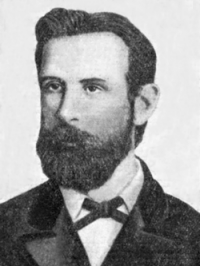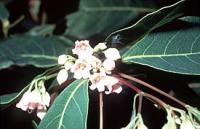Вы здесь
History of research in Badai-Tugai nature reserve.


Tourism in Karakalpakstan.
"The canvas is obtained ... from kendyr fibers, which grow in abundance in the Tarim Valley. In autumn and winter, the dried stems of this plant are harvested, rubbed with sticks or hands, and the resulting fibers are boiled in water; then they are cleaned of fires, boiled again and finally combed."
Nikolay Przhevalsky report. "The second (Lobnorsk) journey". 1876 – 1877.
Sights of Karakalpastan.
In the past, tugai were the only special source for the manufacture of fishing tackle and nets from durable non-rotting kendyre fiber ("Kendyr ..., from the family Arosunaseae, a plant that grows wildly along the banks of rivers in Central Asia, from a dried stem of which, reaching a height of 5 - 6 feet and similar in appearance to reeds, after removing the outer skin, strong fibers are easily separated from the wood by hands, used by the Kyrgyz to make ropes and strings; from the latter, strong fishing nets are woven. Recommended for culture in the southern provinces.").
Since ancient times, the high quality of kendyr fiber has been known from the living peoples in the lower reaches of the Amu Darya and Syr Darya rivers (Dunin-Barkovsky, 1941). Scientific acquaintance with kendyr dates back to 1865 when I.G. Borshchov first described the kendyr in materials on the botanical geography of the Aral-Caspian region (IG Borshov, "Materials for the botanical geography of the Aral-Caspian region. Notes of the Academy of Sciences for 1865").
In 1893 - 1894 in the Russian Testing Department of the Expedition of Procurement of State Papers, the experiments carried out showed that the paper obtained from the kendyr was of high quality, which could be used for the production of banknotes.
In 1894, an expedition was sent to Turkestan to harvest fiber with the aim of issuing government papers. The expedition was supposed to procure 40,000 poods of kendyr fiber, but limited itself to bringing in a small amount of it only for testing in its laboratory.
It was considered economically unprofitable to acquire a large quantity, and the issue of using the kendyr was resolved negatively. Further chemical studies showed that kendyr fibers were almost pure cellulose, and the leaves contained up to 16% rubber (Dunin-Barkovsky, 1941).
Consequently, the wild kendyr was a natural valuable raw material. In 1932, the Karakalpak expedition of the Academy of Sciences of the former USSR worked to identify vast areas with kendyr thickets. These were the territories of Shabbas-Tugay and Badai-Tugay.
In 1936, an expedition of the Novlubinstitute worked in the valley of the Vakhsh river. To check the work of this expedition, on behalf of the Central Committee of the CPSU (b), a commission headed by I.N. Lyublin with the participation of Professor V.N. Dunin-Barkovsky.
The same commission examined the wild thickets of Badai-Tugai and Shabbas-tugai. In the same year I.N. Lublin publishes an article "Kendyr thickets in Karakalpakia", based on materials from a survey of the kendyr growing in Badai-Tugai and Shabbas-tugai.
I.N. Lublin points out that "in both tugai, kendyr is distributed almost everywhere, and its total area is estimated at 5,000 - 7,000 hectares." Kendyr from "Badai-Tugai" was harvested by hand, ripping off the bast from it, having previously moistened the stem, and high-quality fibers were extracted from under the bast.
Thus, in the 1930s, the main anthropogenic factor influencing the reserved tugai forest was the harvesting of the kendyr; in addition, the forest was actively used as a source of timber for construction and for fuel. Information about Badai-Tugai in the lower reaches of the Amu Darya first appeared in the literature of 1927 in the work of I.Ya. Zaktregera “Tugai forests of the lower reaches of the river. Amu Darya ".
In 1935 N.P. Grave surveyed tugai forests from the city of Turkul to the Chortanbai tract, and in 1936 he published his work. Later, the surveyed tugai forests entered the future protected area "Badai-Tugai" and 7 completely independent forest areas located both on the right and on the left banks of the Amudarya River and noted that the tugai forest of the Badai-Tugai site and the young forest of the Khodzhely forestry.
Based on the data obtained in 1936, the work "Tugai Jungle lower reaches of the Amu Darya river”.
Speaking about the works concerning the vegetation of "Badai-Tugai", one should mention the studies of V.P. Drobov (1947, 1950), where he considered in his works the development and ecological features of tugai woody-shrub vegetation in the lower reaches of the river Amu Darya.
A.A. Ashirova (1976) in her monograph described the main types of vegetation in the Badai-Tugai reserve. The first fairly complete list of the winter avifauna "Badai-Tugaya" is given by N.А. Rashkeevich (1962). Systematic work on the study of the birds of the reserve began in 1958, mainly by graduate students and students of the Karakalpak Pedagogical Institute under the guidance and with the direct participation of Associate Professor A.M. Mambetzhumaev (1968), among them should be noted the work of T. Abdreimov "Birds of the tugai and adjacent deserts of the lower reaches of the Amu Darya" (1981).
Information about the vegetation of "Badai-Tugai" is given in the works of B. Sherbaev (1980), S.Ye. Treshkin (1990), S.E. Treshkin, E.V. Kuzmina (2001).
Historical monument in the Badai-Tugai nature reserve. In addition to the natural value, in the adjacent territory of the reserve, there is a medieval monument "Dzhanpyk Kala" - a settlement dating back to the IXth - XIth centuries, erected for defensive operations.
Pakhsovaya wall with a thickness of 5.6 - 5.8 meters at a height of nine meters could withstand a long siege. Analysis of the numerous ceramic material indicates the great skill of the potters in the manufacture of pottery.
Among the stucco pottery, there are fragments of vessels, the surface of which is decorated with vertical stripes forming corrugations. This method of processing vessels is typical only for the lower reaches of the river Amu Darya.
The progress of pottery in Khorezm was so significant that it played a decisive role in the development of ceramic production in the Golden Horde. An important place among the inhabitants of ancietn settlement Dzhanpyk kala was occupied by mining, such as smears of turquoise on quartz, products from talc stone.
Agricultural products, according to excavation materials, showed: cotton, melons, walnuts, peaches, apricots, etc. Leather processing was of great importance. An ancient copper mining region has been discovered to the northwest of the Aktau village.
To the north-east of the settlement "Dzhanpyk-Kala" there is a deposit of millstone, the development of which, apparently, was carried out by the inhabitants of Dzhanpyk Kala in the XII - XIV centuries.
Chilpyk. Religious building of the II - IV centuries, IX - XI centuries AD.
Gyaur kala settlement II - IV centuries BC.
Signal tower near Dzhanpyk-kala (Kuyanchik-say) X - early XIII century.
Mausoleum Sultan Uvais bobo XIV century AD and Sultan Uvais Bobo necropolis.
Ancient settlement Kyat XII - XIV centuries.







